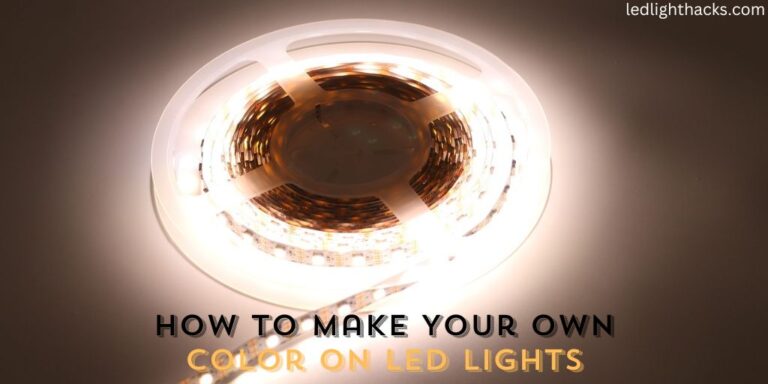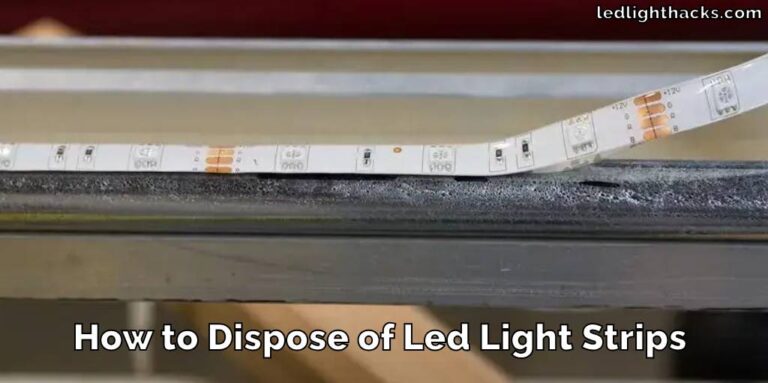How to Change a Light Switch without Turning Off the Power
Mastering the skill of changing a light switch without turning off the power holds great value for those who love to tackle home projects on their own. This ability not only saves time but also keeps your home running smoothly without interrupting the electrical supply to other devices and appliances.

For DIY enthusiasts, learning this technique How to Change a Light Switch without Turning Off the Power means adding a useful tool to their skill set, ensuring they can handle minor electrical tasks safely and efficiently.
It’s about giving yourself the confidence to manage what might seem like a daunting task, turning it into a simple, safe, and satisfying project.
Comprehensive Safety Measures
Consider these crucial steps:
- Begin with the right protective gear: wear insulated gloves and safety glasses.
- Use tools with non-conductive, insulated handles for an extra layer of safety.
- Always check wires with a voltage tester before touching them to confirm they’re not live.
- Keep a flashlight close to maintain good visibility, ensuring you’re not working in dim conditions.
- Finishing off, remember the goal is safety first, ensuring the task is completed without any accidents.
This approach prioritizes your safety, ensuring you’re well-equipped to handle the job securely and efficiently.
Tool Selection Guide
Here are the essential tools with considerations for budget and skill level:
- Insulated Screwdrivers: Essential for safely working with electrical components.
- Voltage Tester: A must-have to ensure wires are not live before you touch them.
- Wire Strippers: Useful for removing insulation from wires without damaging them.
- Needle Nose Pliers: Helpful for bending wires and reaching into tight spaces.
- Flashlight: To keep the work area well-lit, ensuring safety and accuracy.
Equipped with these tools, you’re set to handle electrical tasks with greater ease and confidence.
How to Change a Light Switch without Turning Off the Power [Step-by-Step Process with Troubleshooting]
Setting up a new gadget, which can be pretty exciting but also a bit daunting if you’re not too tech-savvy. Here’s a step-by-step guide, including what to do if you hit a bump in the road:
Step 1: Gather Your Tools and Materials
What you need: Make sure you have the gadget, its manual, and any accessories (like cables or batteries) ready.

Troubleshooting tip: If something’s missing, check the box again carefully. Sometimes small parts can get tucked away in the packaging.
Step 2: Read Through the Instructions
What you need: Take a moment to read through the guide or manual. It can save you a lot of time later.
Troubleshooting tip: If the instructions are confusing, look for a video tutorial online. Sometimes seeing someone else do it first can make things clearer.
Step 3: Begin the Setup
What you need: Start with the first step in the manual, whether it’s charging the gadget or installing a necessary app on your phone.

Troubleshooting tip: If the device won’t turn on or the app won’t install, double-check you’re using the correct charger or app version. It’s easy to mix these up.
Step 4: Follow the Setup Process
What you need: Continue following the setup instructions step by step. Take your time and don’t rush.

Troubleshooting tip: If you hit a snag, like a setup step that doesn’t work, try repeating the previous step. Sometimes, devices need a moment to catch up.
Step 5: Test Your Gadget
What you need: Once setup is complete, test the gadget to make sure it’s working as expected.

Troubleshooting tip: If something isn’t working right, go through the settings menu. You might have missed a crucial setup step.
Step 6: Seek Additional Help if Needed
What you need: Sometimes, despite your best efforts, things just don’t go as planned.

Troubleshooting tip: If you’re stuck, don’t hesitate to reach out for help. The customer support line, online forums, or tech-savvy friends can offer valuable assistance.
Step 7: Enjoy Your New Gadget
What you need: Take some time to enjoy your new gadget. Play around with its features and settings.
Troubleshooting tip: If you find yourself getting frustrated or overwhelmed, take a break. Coming back with fresh eyes can make a big difference.
Remember, it’s totally normal to run into issues when you’re trying something new. The key is to stay patient, use the resources available to you, and keep a positive attitude. Every problem has a solution sometimes, it just takes a bit of time to find it.
Alternative Methods and Techniques
Switching up learning styles isn’t just a clever trick it’s akin to rewiring your brain’s circuitry for maximum efficiency—much like tweaking the components of a home electrical system for optimal performance.
You see, just as a house requires a mix of neutral wires, copper ground wires, and the correct placement of a switch plate or cover plate to ensure safety and functionality, our brains benefit from a diverse set of learning techniques and resources.
Picture this: you’re attempting to install a Single-Pole Light Switch in your home. You’ve got the power switch, and the switch body, and you’re ready to connect the hot wire connections. But something’s not clicking.
You remember there’s an online community, perhaps a forum on Stack Exchange, where folks chat about everything from the right way to connect a green terminal to the nuances of a 3-way switch versus a 4-way switch. This community could offer the alternative perspective you need, much like when a complex problem requires a flexible solution in learning.
It’s about leveraging what you have, like ensuring you’re using a copper ground wire where necessary, understanding the significance of that green ground screw, and not overlooking the importance of stripping just the right inch of insulation from your wires.
Resources and accessibility in learning are just like having the right tools and understanding for the job—whether it’s a brass screw or a green screw doesn’t matter as long as you know how and when to use them.
Efficiency and effectiveness come into play too. Maybe push-in connections save time but ensuring a secure connection to a brass screw or a pair of terminals might offer a more reliable outcome. Similarly, choosing a learning method depends on what you’re aiming for—quick understanding or deep knowledge.
And let’s not forget about personal preference and enjoyment. Imagine the satisfaction of neatly organizing your fuse panel, each current-carrying wire, and ground wire screw meticulously connected, mirroring the joy of finding a learning method that truly resonates with you.
Whether it’s the tactile pleasure of manual work or the intellectual satisfaction of solving a problem, what matters is the connection you feel to the task at hand.
If you find yourself struggling to wrap your head around a concept, consider if there might be an “additional wire” you haven’t connected yet. Could it be that engaging with a current community through an online platform offers the insight you hadn’t considered?
Or maybe hands-on practice, akin to physically wiring a load wire to the correct terminal, could solidify your understanding.
In the end, it’s about finding your ground terminal in a sea of information. Whether it’s the logical arrangement of circuit ground wires or the structured format of an educational course, the goal remains the same: to make a connection that powers your understanding and illuminates your path forward.
So next time you’re faced with a learning challenge, remember the diverse tools at your disposal—from the solid grounding of a copper wire to the shared knowledge of an engaging online community. Keep an open mind, and don’t be afraid to try different methods. After all, the right connection can make all the difference.
Safety precautions
Let’s dive into the nitty-gritty of keeping things safe and sound, especially when you’re tinkering around with stuff like electrical wiring. Safety’s not just a buzzword it’s your best mate in avoiding a pickle or, worse, a trip to the emergency room. So, here’s the rundown on how to keep yourself out of harm’s way.
First off, hitting the books (or manuals, in this case) isn’t just for nerds. Knowing what you’re about to dive into can save you a lot of trouble. This is crucial, especially when dealing with electrical projects, where knowing the difference between black wires and white wires, and where they’re supposed to go, can be the difference between a job well done and a shocking surprise.
Now, onto the armor. Gear up with the right protective kit. If you’re messing around with wires, gloves and goggles are your best friends. And let’s not forget earplugs or a hard hat, depending on the racket you’re making or what’s hanging overhead.
Keeping your workspace cleaner than a whistle isn’t just about being tidy it’s safety 101. A clutter-free zone means you’re less likely to take a tumble or mix up your black tape with electrical tape. And trust me, knowing where your wire nuts and screw terminals are at a glance is a godsend.
Here’s a biggie: know when to wave the white flag. If you need to have something heavier than your last grocery run or scale heights that would give your cat vertigo, call in the cavalry or use the right tools. There’s no shame in playing it safe.
Feeling unsure? There’s a whole community for developers and DIY enthusiasts out there. So, if the difference between ground wires and traveler wires or a single-pole switch and replacement switch is making your head spin, reach out. There’s always someone who’s been in your shoes and can help guide you through.
Now, for the electric jargon and getting your hands dirty. Remember, the hot wire is usually black or colored, and it’s what gives your light fixtures life. The white wire? That’s your neutral buddy, making sure the current flows back safely.
And don’t even get me started on the importance of the green wire or green grounding screw – they’re your lifeline, keeping you safe from electric shocks.
When replacing or fixing something as common as wall switches, make sure you’ve got the right tools at hand – like a good head screwdriver and some quality electrical screw connectors. And, always – always – turn off the correct circuit breaker before you start. That piece of tape on the breaker for safety? It’s not just decoration it marks your lifeline.
Tackling a DIY electrical project doesn’t have to be like defusing a bomb. With a bit of know-how, the right precautions, and an understanding of your own limits, you can make any task, no matter how complex it seems, a simple task.
And remember, whether it’s selecting the right gauge wires or understanding the significance of different-colored tape, the devil’s in the details.
Electrical work might seem daunting with its own lingo – from circuit breaker panels and grounding terminals to the correct circuit breaker and even color coding for safety. But with a cautious approach and a bit of expert advice (thank goodness for those highly rated, verified Experts), even the most electrifying challenges can become manageable.
So there you have it. Keeping these tips in mind can turn an electrical project from a hair-raising experience into something you can handle with confidence – all while keeping your hair firmly in place. And remember, whether you’re a seasoned pro or a curious newbie, safety is always the main event.
Conclusion
Starting off prepared, troubleshooting effectively, being open to trying various methods, and valuing the learning process are all crucial steps. It’s okay to ask for help when you’re stuck, and always prioritize safety, especially when experimenting with new solutions.
Lastly, find joy in the journey of tackling challenges—it makes the whole process more rewarding. These tips aren’t just about solving problems they’re about growing your skills and enjoying the ride. Keep these takeaways in mind, and you’ll navigate challenges more smoothly and confidently.
You may also read – How To Stick LED Strip Lights On Wall Without Damaging Paint
How to Change a Light Switch without Turning Off the Power
Mastering the skill of changing a light switch without turning off the power holds great…
How To Stick LED Strip Lights On Wall Without Damaging Paint
LED light strips have surged in popularity, adorning homes and spaces with their vibrant colors…
Can Led Lights Get Wet
LED lights are everywhere, from homes to city streets, known for their efficiency and brightness….
Creative Ways to Use LED Strip Lights in Your Home
LED strip lights, those brilliant strips of technology, serve as a beacon of innovation in…
Can Solar Lights Catch Fire
Solar garden lights are your go-to pal for lighting up your backyard oasis while keeping…
What gauge wire for LED lights
When diving into LED lighting, one aspect that might not catch your eye at first…











